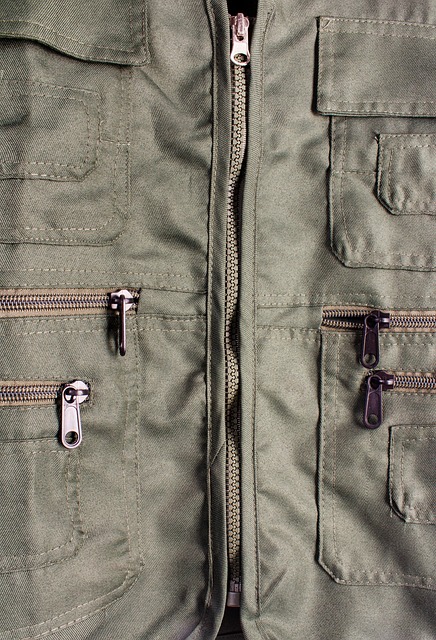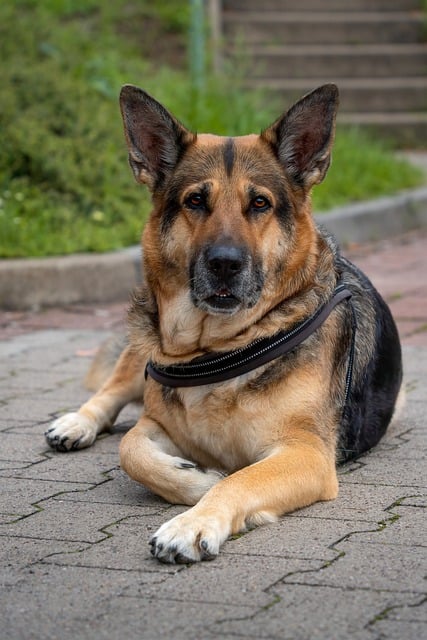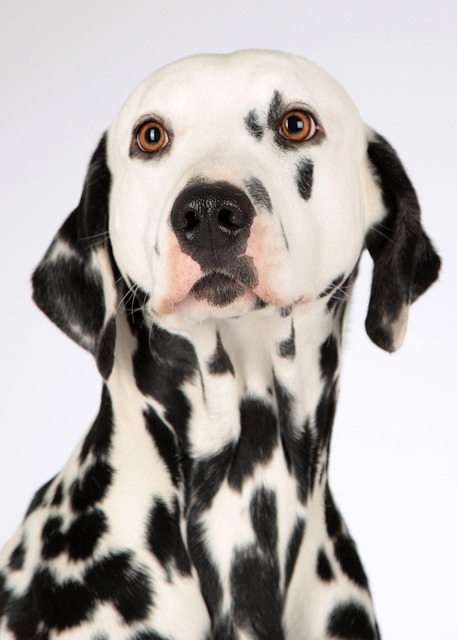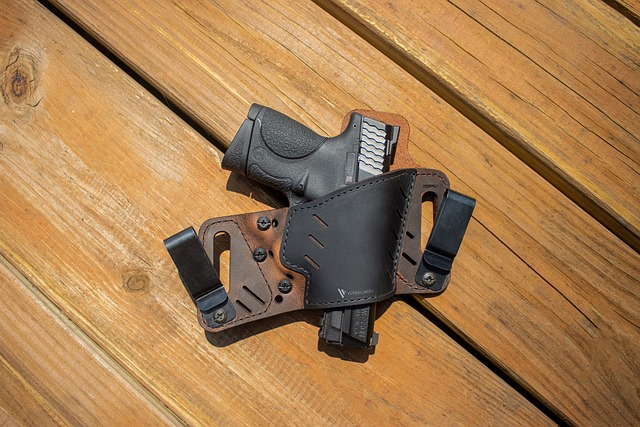Weather-resistant fabrics are essential for tactical dog vests, offering protection from elements while allowing comfort and movement. Key features include water-repellent coatings, durability, and breathability. Balancing waterproofing and breathability is crucial. Testing methods ensure performance standards. Nylon and polyester are popular choices. Vest color impacts visibility and heat absorption. Proper care extends lifespan. Advanced treatments enhance protection for dogs in harsh conditions, suitable for military, search and rescue, and outdoor activities.
“Discover the secrets behind weather-resistant fabric, a game-changer for outdoor enthusiasts and pets alike. This comprehensive guide explores the key features that make fabrics defy harsh elements, from waterproof to breathable solutions. We delve into real-world applications, including the crucial choice of materials for tactical dog vests, ensuring comfort and durability. Learn about testing methods, popular fabrics, and color’s impact on protection. Plus, gain care tips and stay informed about innovations in water-repellent technology.”
Understanding Weather-Resistant Fabric: Key Features

Weather-resistant fabric is designed to withstand various environmental conditions, offering protection against rain, wind, and extreme temperatures. When it comes to tactical dog vests, this type of material is essential for ensuring both the comfort and safety of your canine companion during outdoor missions or adventures. Key features distinguish weather-resistant fabrics from regular textiles; these include water-repellent coatings, durable construction, and breathable properties.
A tactical dog vest, equipped with high-quality weather-resistant fabric, can protect against elements while allowing for a range of motion. The material’s water-repellent coating prevents liquid from penetrating, keeping the wearer dry. Durability is paramount; these fabrics are designed to withstand rigorous activities and harsh conditions without tearing or wearing down quickly. Additionally, breathability ensures that moisture vaporizes, preventing overheating and discomfort during physical exertion.
Tactical Dog Vest: Choosing Materials for Durability

When selecting materials for a tactical dog vest, durability is paramount. The vest must withstand not only the rigors of daily training but also the unpredictable demands of outdoor missions. High-quality weather-resistant fabrics are essential to ensure the vest retains its integrity in various environmental conditions. Look for materials with features like water resistance, breathability, and UV protection, which not only shield your dog from the elements but also prevent discomfort or damage to their fur and skin.
Choosing a fabric that offers superior strength and elasticity is equally crucial. The vest should fit snugly without restricting movement, yet be able to endure intense physical activity and potential impacts. Reinforcements at stress points, such as shoulders and chest, further enhance durability. Always opt for brands that specialize in tactical gear and prioritize quality control, ensuring your dog’s vest is built to last through any challenge.
Waterproof vs. Breathable: Balancing Needs

When designing weather-resistant fabrics, especially for items like a tactical dog vest, it’s crucial to strike a balance between waterproofing and breathability. Waterproof materials prevent any water penetration, ideal for heavy downpours during outdoor training sessions. However, completely impermeable fabrics trap moisture vapor from the body, leading to discomfort and potential health issues due to overheating.
Breathable materials allow some water vapor to escape, keeping the wearer cool under wet conditions. This is especially important for active dogs in tactical vests, as it ensures they remain comfortable during prolonged use. The perfect weather-resistant fabric should offer a combination of both waterproofing and breathability to cater to these conflicting needs effectively.
Testing Methods for Weather Resistance

When assessing weather resistance in fabrics, various testing methods are employed to simulate real-world conditions. One common approach is the use of artificial weather machines that replicate rain, wind, and UV exposure. These machines subject fabric samples to consistent and intense environmental factors over extended periods, allowing manufacturers to gauge their products’ durability. For tactical dog vests, such tests are essential as they often face harsh outdoor conditions during training and operations.
Additionally, laboratory-controlled environments can simulate specific weather scenarios. This includes exposure to controlled temperatures, humidity levels, and various chemical compounds to mimic the effects of sweat, salt water, or other potential contaminants. By subjecting tactical dog vests to these rigorous tests, manufacturers ensure they meet stringent performance standards, guaranteeing their effectiveness in protecting dogs during outdoor activities.
Popular Fabrics Used in Outdoor Gear

When it comes to outdoor gear, particularly items designed for active pursuits and adventure, the fabric plays a pivotal role in determining performance and durability. Tactical dog vests, for instance, often require materials that can withstand rigorous activities and varying weather conditions. Two popular choices in the realm of outdoor fabrics are nylon and polyester.
Nylon is renowned for its exceptional strength-to-weight ratio, making it ideal for high-stress applications like tactical gear. It’s water-resistant and quick-drying, essential traits for outdoor adventures where exposure to rain or moisture is common. Polyester, another favorite among manufacturers, offers excellent durability and a range of performance properties. It’s known for its resistance to abrasion, which is crucial for items like dog vests that endure constant movement and potential friction against rough surfaces.
How Color Affects Weather Protection

The color of a fabric can play a significant role in its weather resistance, especially for items designed for outdoor use like tactical dog vests. Darker hues tend to absorb more heat and light, which can accelerate the breakdown of certain materials under intense sun exposure. Lighter colors, on the other hand, reflect sunlight, helping to keep the vest and its wearer cooler. This is particularly beneficial in warm climates or during extended periods outdoors.
Furthermore, lighter colors are often more visible in various weather conditions, enhancing safety for active dogs and their handlers during outdoor adventures. In contrast, darker tactical dog vests might be preferred in cool or cloudy environments where heat absorption isn’t a concern, but high visibility is crucial for safety measures.
Care and Maintenance Tips for Longevity

To ensure your tactical dog vest remains weather-resistant and lasts for years, proper care and maintenance are essential. Start by regularly cleaning the vest using a mild detergent and warm water. Avoid harsh chemicals or abrasive materials that can damage the fabric. After washing, thoroughly dry the vest away from direct heat sources to prevent shrinkage or discoloration.
Conditioning the fabric periodically is also crucial. Apply a small amount of waterproof spray or silicone-based lubricant to the surface to maintain its water-repellent properties, especially if your dog frequently encounters wet conditions during training or outdoor adventures. Lastly, inspect the vest for any signs of wear and tear, such as frayed edges or weakened threads, and make repairs promptly to prevent further damage.
Innovations in Water-Repellent Technology

In recent years, weather-resistant fabric technology has seen significant advancements, particularly in developing innovative water-repellent treatments. These breakthroughs have revolutionized outdoor apparel and gear, ensuring enthusiasts and professionals alike remain dry and comfortable during inclement weather. One notable application of these innovations is in tactical dog vests, which now offer enhanced protection against rain and moisture for working canines.
The key lies in advanced coatings and membrane systems that repel water while allowing vapor to escape, keeping the wearer dry from the inside out. These technologies are being integrated into various fabrics, making them ideal for outdoor activities, military operations, and even everyday use. For instance, tactical dog vests equipped with these water-repellent treatments keep dogs dry during search and rescue missions or field training, ensuring optimal performance and comfort in wet conditions.
Real-World Applications of Weather-Resistant Textiles

Weather-resistant fabrics have found their way into various real-world applications, enhancing comfort and durability across different industries. One notable example is the use of these textiles in tactical gear, such as a tactical dog vest. These vests are designed to protect both the animal and its handler during missions, ensuring optimal performance in harsh environmental conditions. The fabric’s resistance to water, wind, and stains is crucial for maintaining the vest’s integrity over time.
Moreover, outdoor enthusiasts rely on weather-resistant materials for their clothing and equipment. From hikers and campers to fishermen and hunters, these fabrics offer protection against rain, snow, and extreme temperatures. For instance, a weather-resistant jacket or pant can extend the duration of outdoor activities by providing comfort and warmth, even in unpredictable weather patterns. This versatility has made weather-resistant textiles an indispensable component in numerous adventures and professional settings.
